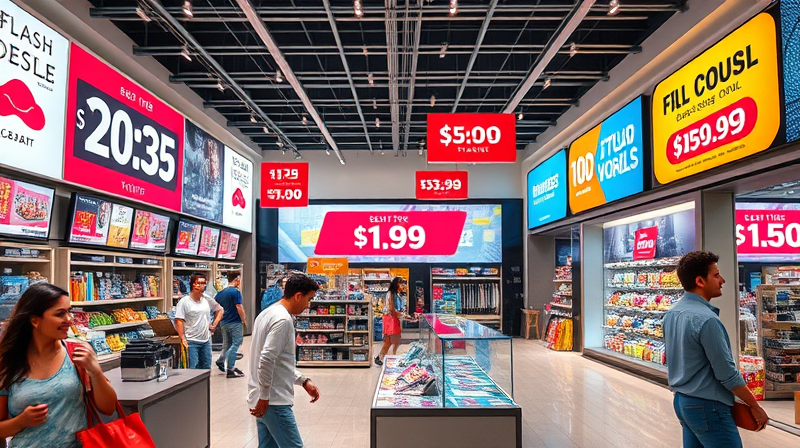In today's fast-paced world, saving money on groceries has become more than just a budgeting hack—it is an art. With rising prices and an increased focus on quality nutrition, every shopper deserves strategies that allow them to shop smartly and efficiently. The following guide provides innovative and practical tips that empower you to achieve a fulfilling, economical grocery experience. By embracing these methods, you not only protect your finances but also contribute to a sustainable lifestyle.
Grocery shopping is no longer a mundane task; it is an opportunity to refine your planning, adapt to technological advances, and become a savvy consumer. In these dynamic times, learning how to balance quality with affordability is more important than ever. The journey begins with thorough planning and organizing every aspect of your trip, from meal planning to choosing the smart shopping hours.
Planning and Preparation: The Cornerstones of Success
A key ingredient to economical grocery shopping is detailed preparation. Meal planning is essential to saving money, as it ensures you buy only what you require and prevents waste. Start by checking what you already have at home and build your week's menu around promotions and weekly deals. This approach not only reduces spending but also inspires creative cooking and healthier meal choices.
One of the most effective strategies is to stick to a list. Creating a comprehensive shopping list keeps you focused and minimizes impulse buys. It is helpful to organize your list by sections of the store to enhance the flow of your shopping experience. Such organization eliminates last minute rush and allows the use of digital tools and store apps to pinpoint discounts and savings.
Developing a habit of reviewing weekly flyers and comparing prices using mobile applications can be instrumental. With every purchase planned ahead, you gain the freedom to explore deals on high-quality staples like chicken, beans, and rice, without overspending.
- Plan meals ahead: Base your meals on current pantry stock and in-store promotions.
- Create a detailed list: Prevent impulse buys and ensure you purchase only what is needed.
- Employ digital tools: Use apps and loyalty programs to uncover additional discounts.
Planning doesn’t end at the moment you leave your home. It is a continual process of learning, analyzing your shopping habits, and refining your approach. The more efficient your planning becomes, the more reliable your savings will be, making your grocery shopping routine not only cost-effective but also highly sustainable.
Smart Strategies for Every Shopper
Beyond planning, the shopping experience itself requires smart tactics. One of the best methods is to buy seasonal and local produce. Seasonal items are fresh, more affordable, and provide a nutritional boost through less processed ingredients. Local markets and Community Supported Agriculture (CSA) initiatives are excellent alternatives to traditional grocery stores. They offer higher quality produce at lower prices and help support local farmers.
Another smart tip is to switch from brand names to store-brand items. Typically, generic products cost significantly less while maintaining similar quality standards. Also, try to avoid shopping on an empty stomach as hunger may trigger impulsive, unnecessary purchases. Instead, shop when well-fed to maintain focus on the essentials.
When venturing into bulk buys, strategic planning is critical. Purchasing non-perishable items in larger quantities helps reduce costs over time. For items that may otherwise spoil quickly, ensure you have a method to preserve them—such as freezing or canning. This strategy minimizes waste and maximizes savings over extended periods.
Leveraging the benefits of technology also plays a key role in economical grocery shopping. Many grocery store apps now allow you to track deals, compare unit prices, and even get digital coupons right at your fingertips. These innovative tools not only save time but also empower you to make healthier, wallet-friendly decisions.
Efficiency is the name of the game. Limit the number of trips to the store to avoid unnecessary gas expenses and impulse purchases. By consolidating your grocery visits and shopping during non-peak hours, you free up more time to focus on quality items and plan your meals better.
Lastly, commit to building budget-friendly shopping habits gradually. Establish a firm spending limit, and if necessary, make cash purchases to maintain control over your budget. Over time, these habits evolve into a sustainable lifestyle change that secures your financial well-being and contributes to environmental sustainability.
Implement these innovative techniques one step at a time, and you will see immediate improvements in your grocery shopping routine. The goal is not only to save money but also to adopt a holistic approach towards a balanced lifestyle. With disciplined planning, in-depth research, and a focus on quality, every grocery run will transform into an empowering journey for both your budget and your health.
Remember, an economical grocery run does not mean compromising on nutrition or quality. It is about making thoughtful decisions that align with your financial goals and lifestyle values. Embrace the journey and relish the empowerment that comes with every smart purchase. Your pantry and your wallet will both thank you for the changes you are making today.








